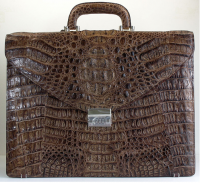News
Latest Lion Aid News
The European Union loves crocodiles, alligators and lizards
Thursday 6th September 2012
 Very recently, data on wildlife imports by the European Union became available on the web. It takes a bit of time to go through as it is an Excel database and as the site assumes you know the scientific names for all species. Nevertheless, it is the best source available to see how countries in the EU contribute to the international wildlife trade via imports. The data are only for 2010. We focus here only on the imports of crocodile, alligator, python, and varanid (lizard) skins because the numbers are eye-popping. The database also helpfully provides countries of origin and secondary countries that assisted in the trade. So here we go for some numbers… 1. The American Alligator (Alligator missisipiensis): France imported 35,800 skins from Singapore (origin USA) and 122,541 skins direct from the USA. France also imported 27,233 products via China and 186,101 products from Taiwan. In addition, 38,234 skins went to Italy and 42,731 skins to Germany. All in 2010!
You get the point by now. Italy, France and Germany want huge numbers of skins of CITES listed reptiles to make and sell shoes, handbags, belts and more. Belgians seem to want to eat them rather than wear them. We have not yet reported the equally astonishing level of trade in The Canadian Lynx (Lynx canadensis) and The Bobcat (Lynx rufus) skins to European destinations (mainly Greece). If we want to be critical of the trade in rhino horn, elephant ivory and lion bones from Africa to Asian countries, cannot we also level the same degree of criticism on this European trade in the skin trade in endangered and vulnerable species? Let’s have France, Italy and Germany stop this trade in reptile skins which is all really to satisfy “fashion”? Many of these skins, it could be argued, come from “farms” – crocodile and alligator farming is big business. Nevertheless, many skins also are harvested from the wild and mixed in with the “farmed” skins. Picture credit: http://www.bikerringshop.com/images/briefcases/dark-brown-crocodile-briefcases-1.jpg |
Posted by Pieter Kat at 11:14
No comments have been posted yet.
Add a new comment
Existing user
New user sign up



